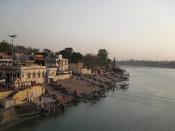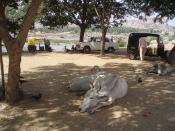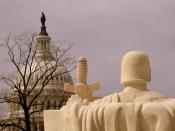Assignment #3
Goa
Goa has a single-chamber legislative assembly of 40 members. The state sends three members to the Indian national parliament: two to the Rajya Sabha (Upper House) and one to Lok Sabha (Lower House).
The states of India have a legislature invested with the governance of state affairs. The union territories of Delhi and Pondicherry also have their own legislatures. Each of these 30 political units is formally headed by a governor, who is appointed by the president of India to a five-year term. The governor's powers resemble those of the president. The governor's most important duty is to invite a party leader to form a government after state legislative elections.
The basic territorial unit of administration in the states is the district; at the 1991 census India had 466 districts. Within the districts are units called tehsils or talukas for departments such as revenue and education, and "blocks," which are the base units for agrarian development.
Local self-government includes village councils (panchayats) and municipal councils, which began under British rule. Local governments have been saddled with major duties, few sources of revenue, and a weak base of political power. These bodies were frequently superseded for long periods by the state governments. In the mid-1990s new constitutional provisions, including the requirement that a percentage of village council seats must go to women, were implemented to help improve these local governments. A few states, most notably West Bengal and Karnâtaka, had successful village government systems in the 1980s and 1990s.
North Carolina
North Carolina's first constitution was adopted in 1776; a second one was adopted in 1868 and revised in 1875. The present constitution went into effect on July 1, 1971. Amendments must be approved by three-fifths of each legislative house and by a majority of the electorate.



Nice Essay!
Very well-thought-out, plus it flowed smoothly..Need a thesis that drives whole idea of paper!
Eric
2 out of 3 people found this comment useful.